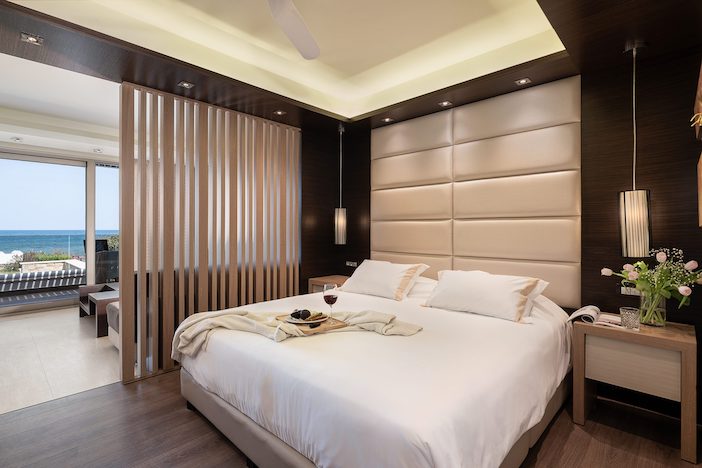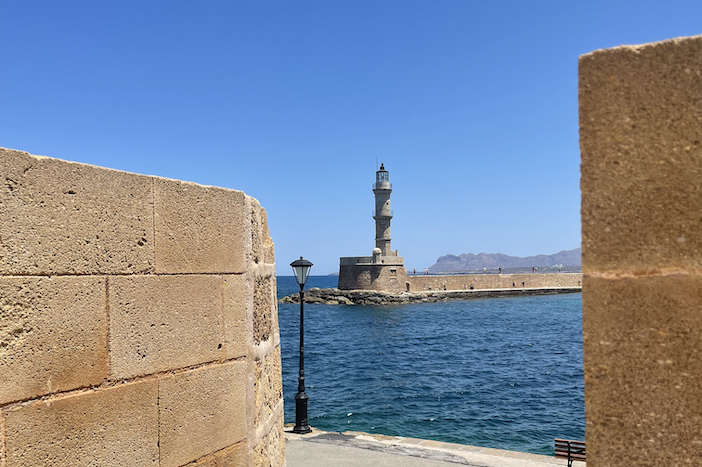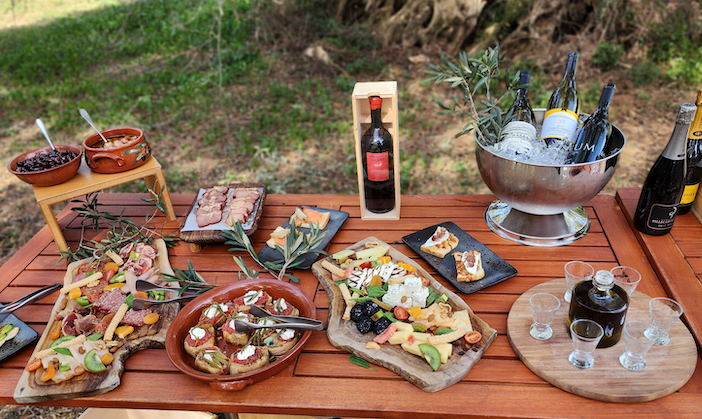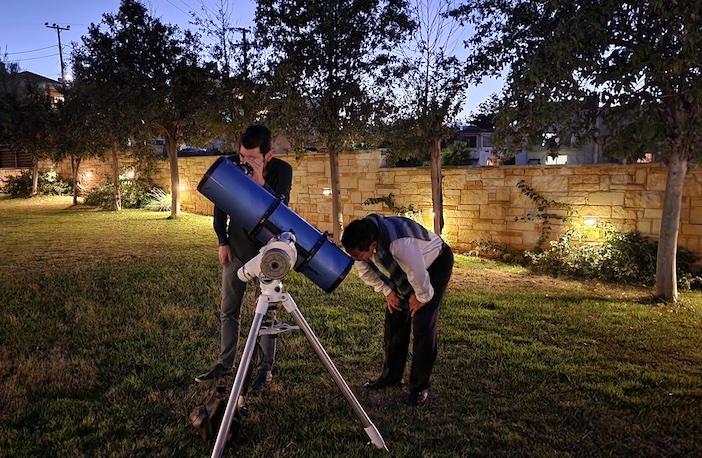As a travel writer, trade events, more than just an occupational requirement, provide one’s bread and butter. Earlier in the year, I attended an event in London for journalists to meet tourist boards and potentially cover stories for them — speed-dating for travel journalists, if you will. I was taking a moment between meetings when a woman approached me about the bag I was carrying, a vintage Adidas holdall from the 70s, and started a conversation about it. She represented the Cretan Dream Resort – a four-star boutique hotel in Crete, a short drive from Chania.
It’s an odd introduction to a hotel, admittedly, but then serendipity never did conform. I was there in person just six weeks later.

My first, welcome impression was that it was worlds away from Crete’s exposure to mass tourism, physically and metaphorically. It sits isolated, with obligatory rooftop infinity pool overlooking the Mediterranean Sea; a view my room – spacious, enticing, deftly appointed – happily complimented, particularly for sunrise. I’m that guest that others hate and envy in equal measure, waking at 6am to the first shimmer of the sun glimpsing over the horizon, going for a beach run at 7 – and then hitting the hotel gym by half past. I know, I know, and I’m gloating. On a clear day, incidentally, from the beach, you can just about make out the coastline of Athens on the mainland. That’s worthy of a run on its own.
For all of Greece’s historic sites and cultural hotspots, Chania is, perhaps, one of its lesser known – and not necessarily for its own history. The Old Venetian Harbour was built in the 14th century by its eponymous medieval occupiers of the island. A mosaic of terracotta rooftops, it’s a film location’s dream, cradled by a sea wall capped by the Egyptian Lighthouse overlooking the harbour within. Not, one might expect, named for its Egyptian masters, but for its 19th century restorers following the city’s Ottoman occupation.

And it’s that occupation that adds a further dimension to Chania’s history. What fascinated me was the minarets belonging to former mosques in Chania, which are protected by the city. The Kucuk Hasan Mosque was built by the Ottomans and is one of Chania’s prominent landmarks. While it is no longer used for prayers, it hosts art exhibitions nowadays. For something quite unique, there’s also the minaret belonging to the Church of St Nicholas – built in 1320, it was formerly a mosque during Ottoman rule before the Venetians converted it.
That history, curiously, pervades every aspect of your visit, even what – and where – you eat. I had lunch at an orchard belonging to the hotel’s owner which not only showcased the range of the best Cretan produce the island had to offer; buffalo and beef sausages, olives, salads, cheese, and local wine, we ate in the shade from the blazing sun next to a 2000-year-old olive tree that has outlasted nearly every era in Crete’s history.

But for me, Crete’s trump card is its many beaches. After roughly an hour on the ferry overlooking some quite imposing mountains, we reached Balos beach – known as the Blue Lagoon to locals – with turquoise waters and golden sands. Walking through it with the water temperature alternating was quite therapeutic, and I swam on the way back to the ferry; Another beach worth visiting, if you can tolerate a large crowd of holidaymakers, is in Sfakia, where simply topping up a burgeoning tan is considered an afternoon well spent.
With Chania as a base, there are plenty of other discoveries further afield. With a tip off from the hotel, I took a speedboat a good 30 minutes away to a small enclave of restaurants and shops, only reachable by boat, for lunch, made all the more worthwhile for viewing Crete’s mountains from a sea view.
For the more adventurous, a two-hour drive to the other side of Crete takes you to Knossos Palace, where the fabled Theseus and the Minotaur was set. It’s a maze (ahem) of ruins, and though its many chambers, rooms and ruins are fascinating in their own right, the tour guides are the stars of the show, adding colour with their storytelling. Closer to home, Chania itself is not without its own ancient marvels, notably in the Archaeological Museum, with artefacts dating back over 5000 years and its own origins of Minoan settlements.

Back in Chania that evening, the harbour wall provided the perfect spot for a sunset stroll out to the Egyptian lighthouse, taking in the view back to the port. And, with night falling, as a grand finale to my time in Crete, as guests at the Dream Resort we were treated to a private session of an astronomer showing us constellations via a state-of-the-art telescope. As it was a fairly clear night, we could see a multitude of stars, and were taught how to identify constellations, many linked to their own mythology around ancient Greece.
I came to Crete not knowing what to expect, with vague notions of its popularity as a tourist destination, and slightly fearful of what I might find. The island, however, wowed me with its beauty, its history, and its food. Add to that some guaranteed sunshine, and I know it’s somewhere I’ll be revisiting someday.
Cretan Dream Resort is located 20 mins drive from Chania Airport. For more information and reservations, please visit www.cretandreamresort.gr.
For more information about Chania, and to start planning your trip, please visit the official Greece Tourism website at www.visitgreece.gr.
Header photo by Leonhard Niederwimmer, courtesy of Unsplash




